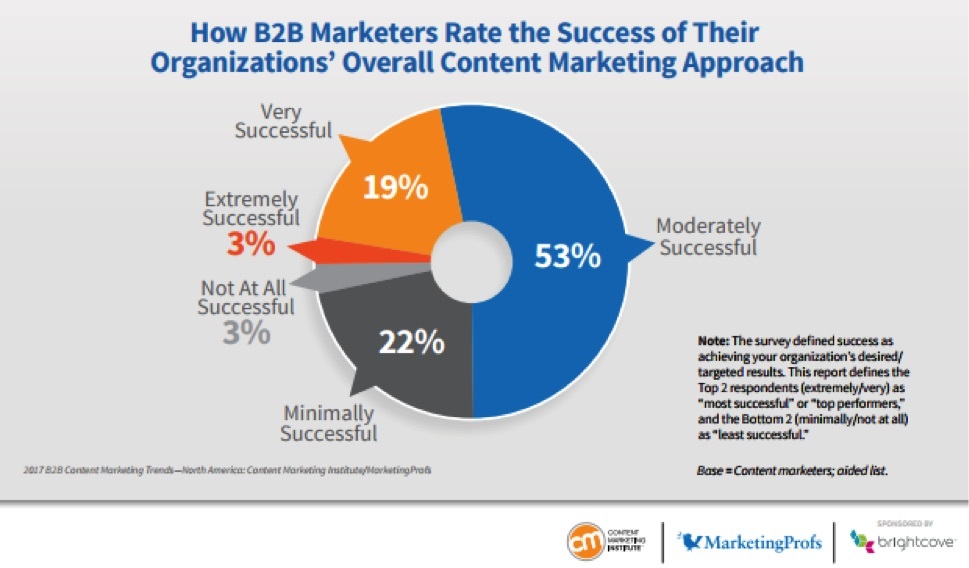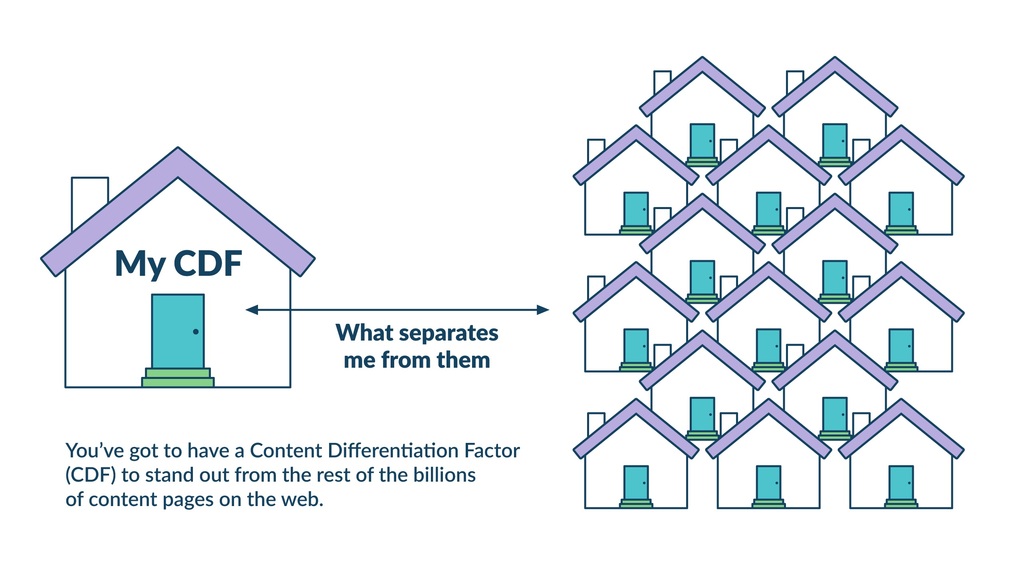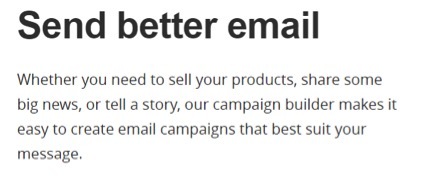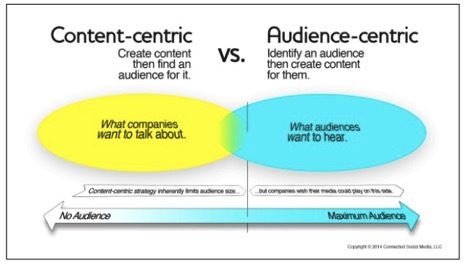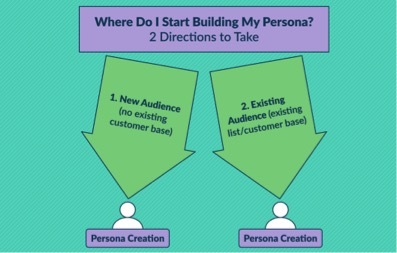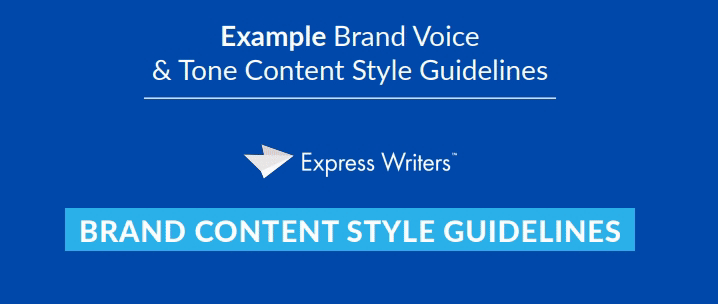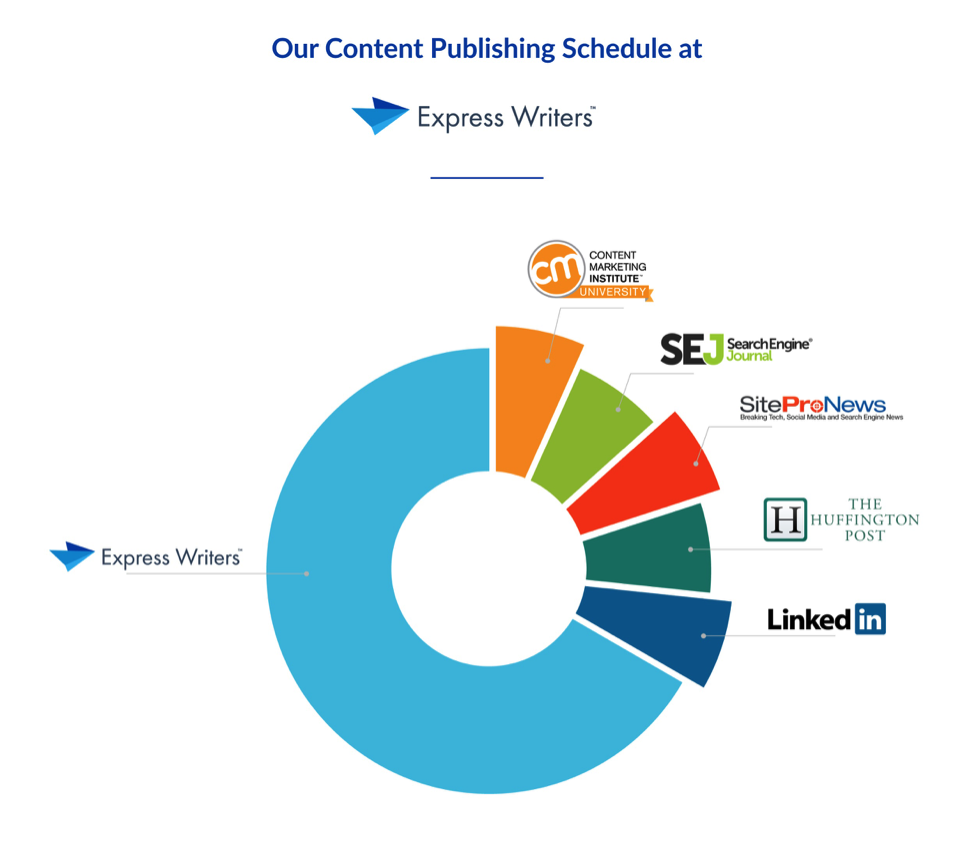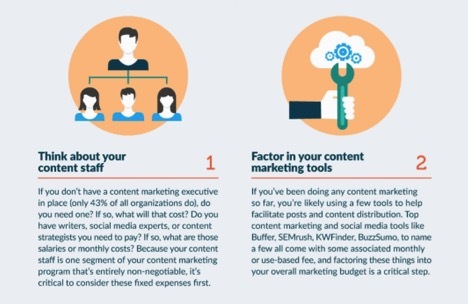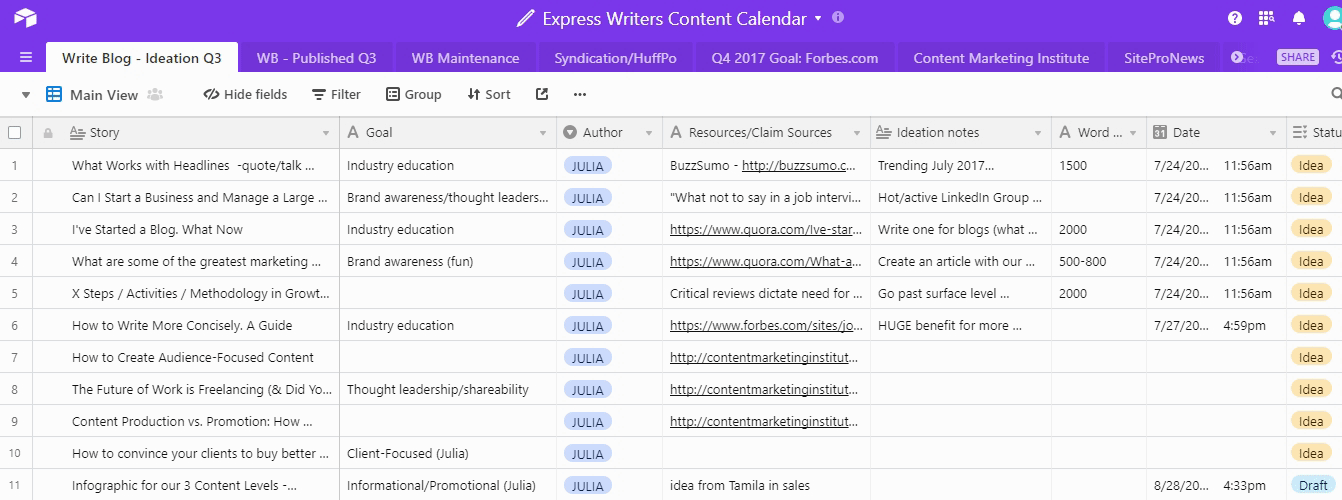Content marketing is easy, right?
I mean, if 89% of B2B marketers are using it, it can’t be that hard. Right?
Well, here’s the thing. While a majority of marketers have committed to content marketing, not many of them are having a ton of success.
In fact, out of those 89% of marketers, only 21% of them said their content marketing approach was very or extremely successful.
So, what’s the problem here? Why aren’t marketers breaking through with content marketing?
The reason, for most, is simple: far too many marketers and brands are unaware of how to build a content strategy that’s ROI focused.
But that changes today. Because today we’re going to simplify the process and break down the seven components that make up a viable, ROI-based brand content strategy. Let’s get started.
Tip 1: Getting Clear On Your Content Differentiation Factor
First things first, you need to find a way to separate your brand from the pack.
There’s a whole lot of content, over 1,400 pieces of it, being published on the internet every minute.
If you don’t have a way to separate yourself, you’re going to have a tough time breaking through and having success with your content strategy.
To break through, you’ll first need to establish a Content Differentiation Factor (CDF).
But what is a CDF?
To identify your CDF, you first need to answer two questions:
- What is your unique, standout perspective in your content niche that makes you an expert to be “heard” in your space?
- How can you communicate your mission in the simplest way possible?
While creating your CDF, keep in mind the importance of keeping it simple and focused on benefits.
Don’t get caught up in features. Everyone has features. Instead, focus on the benefits that your brand provides and the outcome that it will help your customers achieve.
A great example of a brand that does this well is MailChimp. Take a look at their CDF:
From this short read, it’s immediately clear that MailChimp’s mission is to make it easier for users to succeed with their email marketing campaigns.
For a more detailed resource on identifying your Content Differentiation Factor, check out my article on the 3 Ways to Make Your Content Stand Out.
Tip 2: Building an In-Depth Audience Persona
If you want your content strategy to succeed, it’s absolutely essential that you’re creating audience-centric content.
Far too many marketers try to create content first and then work to find an audience for it. Instead, your job is to identify your audience and then create content that caters to them.
The optimal way to gain an in-depth look at your audience is by building an audience persona.
When building your persona, the direction you take will depend on whether you’re targeting a new audience or existing one.
If you’re building a persona for a new audience, Google Surveys is a great way to get some in-depth information on your audience.
Not only is it affordable ($.10-$3.00 per survey), but it gives you the opportunity to target exact demographics, setup pre-qualification questions, and find your audience’s pain points.
Other than demographics, some examples of questions you could ask in your survey include:
- Workplace and Job Title
- Education Level
- Industry
- Experience
- Social Networks That You Use
- What Are Your Five Biggest Problems?
While your exact questions will depend on your niche, these should give you a solid head start.
As for building a persona for an existing audience, Google Surveys is once again the way to go.
The major difference here is that you’ll be sending the survey out to your existing customer list via email.
In order to encourage customers to actually take the survey, your best bet is to offer some type of reward or run a contest for only those participants that complete the survey.
Gift cards or free services are popular rewards in this situation. As for your questions, some examples you can use include:
- Did you consider any alternatives to our service or product before choosing us?
- What made you choose us over a competitor?
- Which hesitations or doubts did you have before completing your purchase with us?
- Which questions were not answered on our website?
For more detailed info on building personas, check out my guide on How to Develop a Target Persona and Reach Your Audience.
Tip 3: Creating Brand Style Guidelines
For one, brand guidelines help ensure that your writers are all on the same page when it comes to the content that will be featured on your site.
Factors like colors, brand name usage, style, formatting, types of sources used, and tone should be consistent across all of your content.
Imagine how confused your readers would be if they were reading a 3,000 word dry, technical guide one day and a playful, down to earth 500 word article the next.
And that type of confusion will undoubtedly affect your ability to develop a strong, loyal audience over the long term.
The second reason it’s important is because it helps ensure the personality of your content remains aligned with your audience persona.
While there are many different ways to write a style guide for your brand, it’s best initially to keep it as short and simple as possible.
A paragraph on each of the following elements should be more than enough to get started:
- Who Are We?
- What Do We Do?
- What is Our Content Differentiation Factor (CDF)?
- What is Our Process?
- Use of Brand Name
- Our Preferred Tone of Voice
- Sources
- Logo
- Visuals
Once these guidelines are established, you’ll also want to include your audience persona.
Take a look at this example from the Express Writer’s brand content style guidelines:
As you can see, our guidelines are clearly laid out in only four pages. And while our current guidelines document is several pages longer than that, we’ve evolved to that point over the past six years.
When you’re just getting started, 3-4 pages is more than enough.
Your brand and content will undoubtedly evolve over the years, just as ours has, so don’t get stuck trying to make everything perfect right from the start.
Tip 4: Developing Initial Keyword Reports
In order for your content strategy to remain ROI-focused, it’s essential that you’re positioning your content to be found by search engines.
And, in order to be found by search engines, you need to be targeting the right keywords.
Keyword research tools like KWFinder and SEMrush have made this process easier than ever.
When determining keywords to target, be sure that you’re not falling into the trap of being romanced by high search numbers.
Instead, it’s best to focus on long-tail keywords that are relevant to your target audience.
While this topic is a bit too comprehensive to cover in this post, my Guide to Proper Keyword Research should provide enough background to help you get started.
Tip 5: Core Content Setup
One of the most integral components of a successful content strategy is having an understanding of where you’re going to be publishing your content.
While your main focus should be on your website, guest blogging and social media are two avenues that can help deliver and increase ROI as well.
Here’s a look at what our content publishing schedule looks like at Express Writers:
As you can see, about 70% of the content we create is posted on our own blog. In addition, I write guest blogs for the Content Marketing Institute, Search Engine Journal, SiteProNews, and the Huffington Post.
We also publish some of our content on LinkedIn and Twitter, the two social media platforms we’ve identified as the best fit for us based on our audience persona.
While it can be tempting to do so, it’s important that you don’t overwhelm yourself by trying to be everywhere.
To determine where to publish your content, answer these three questions:
- Does this platform fit my niche?
- Who is my intended audience, and do they spend time there?
- Will my presence there help me meet my content goals?
Tip 6: Setting a Content Costs Budget
Just as with any other marketing channel, the importance of budgeting for content marketing is undeniable.
If you don’t have one, you’re going to have a near impossible time determining ROI and will almost certainly not have the consistency necessary to succeed with content.
While this is another component that’s too comprehensive to cover in this post, here area few tips to help you get started:
For more on the topic, Inc. contributor Jayson Demers put together a great resource on How to Set a Content Marketing Budget if You’re Just Starting Out.
Tip 7: Building an Editorial Calendar
Creating an editorial calendar is essential if you want to maintain the consistency and organization necessary to develop a high ROI content strategy.
And while creating an editorial calendar used to be a tedious process, easy-to-use tools like Airtable have made it much easier.
As someone who has been doing content marketing for over a decade, this tool has been an absolute life-saver.
Here’s an example from our own content calendar that was created through AirTable:
As you can see, it has a lot of similarities to Excel. The thing that separates it, however, is how clean and dynamic it is.
You can easily share with clients and/or team members and, by using their editorial calendar template, it’ll only take you a few minutes to get up and running.
If you want to get up to speed quickly on how to use AirTable, and take full advantage of its capabilities, I’m actually teaching it as part of an individual module in my Content Strategy Course.
Establish the 7 Components of a ROI-Based Content Strategy
Now it’s your turn.
Make the decision that you’re going to move forward and use these seven components to create a high ROI content strategy.
If you’d like to expedite the learning process, my Practical Content Strategy Certification Course was designed to walk you through each component step-by-step. It’s a great way to learn how to build a practical, ROI-based online brand content strategy from the ground up.
For more tips on this topic, have a read of how to generate maximum content marketing ROI.
Categories
Content MarketingCategories
Content MarketingThe Monthly Buzz⚡
Subscribe to BuzzSumo's monthly newsletter to:
Stay up-to-date with the best of the best in content marketing 📝
Get data-informed content, tips and tidbits insights first 👩🏻💻
Read top shared content by top marketing geeks 🤓
Try
Enter any topic, term or url to search to see BuzzSumo in action. It’s free!
100% free. No credit card required.
